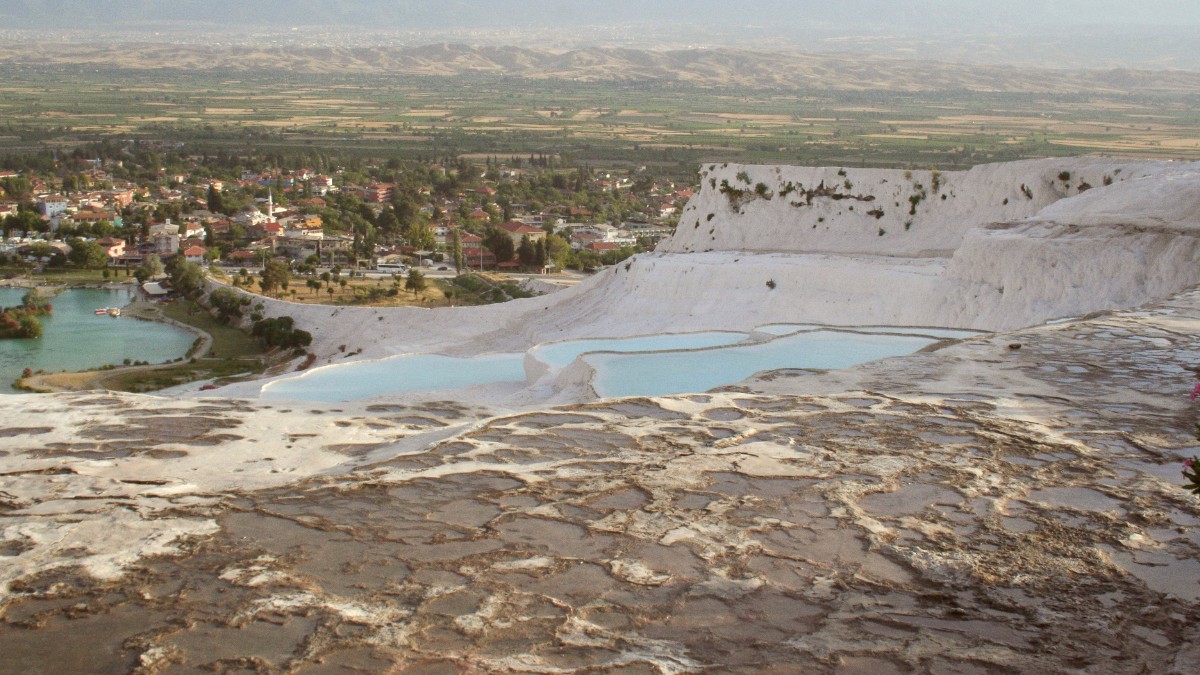
Aegean Coast, Turkey
The white travertines create a sense of wonder, a tactile experience like stepping onto another planet.
Swimming in Cleopatra's Pool, surrounded by submerged Roman columns, merges relaxation with history.
The contrast between the dazzling white natural formations and the ancient stone city highlights humanity's long relationship with this place.
Visitors gain cultural perspectives by interacting with Turkish hospitality, savoring local cuisine, and observing daily life.
This combination of geological marvel and historical narrative fosters appreciation for both nature and human heritage.
Travelers play a role in preserving Pamukkale for future generations.
Always ask permission before taking photos of individuals, especially women and children. Respect their privacy.
Refrain from discussing sensitive political or religious topics.
Engage with and appreciate the local culture, cuisine, and customs.
By adopting these practices, visitors positively contribute to Pamukkale.
This commitment helps Pamukkale remain a beautiful and preserved destination.
Ensuring the site's beauty for those who visit next.
Responsible tourism fosters a shared sense of guardianship.
Embrace practices that minimize negative environmental and cultural footprints.
Leave only footprints, take only memories.
By making conscious choices, you help preserve the beauty and cultural integrity of Pamukkale for years to come.
Pamukkale serves as a wonderful starting point or a stop in a larger Turkish adventure.
Head to Ephesus (near Izmir/Selçuk), one of the best-preserved ancient Roman cities.
Visit Cappadocia, famous for its "fairy chimney" rock formations and hot air balloon rides.
Explore the Turquoise Coast (e.g., Antalya, Fethiye, Kas) for stunning beaches and water sports.
Explore city life and historical centers.
Pamukkale connects well by overnight bus to Cappadocia.
It also connects by bus or train to Izmir (for Ephesus).
It serves as a good intermediate stop between the Mediterranean coast and central Turkey.
Combine Pamukkale with other captivating regions.
A common route combines Istanbul, Cappadocia, Pamukkale, and Ephesus.
If visited in summer, return in spring or autumn for milder weather and lush landscapes.
A winter visit offers a serene, uncrowded experience of the white travertines.
Cultivate new interests inspired by your travels.
Capture the stunning landscapes and historical sites of Turkey. Learn new techniques on Skillshare.
Document your journey through art. Sketch the ancient ruins or natural formations.
Record your thoughts and experiences. A travel journal becomes a treasured keepsake.
Recreate favorite dishes from your trip. Explore online recipes or cooking classes.
Continue learning Turkish phrases. Further language learning deepens cultural appreciation.
Dive into the history of Hierapolis and the Roman Empire in Asia Minor.
May your visit to Pamukkale be filled with awe, discovery, and a lasting appreciation for its unique blend of natural beauty and ancient history.